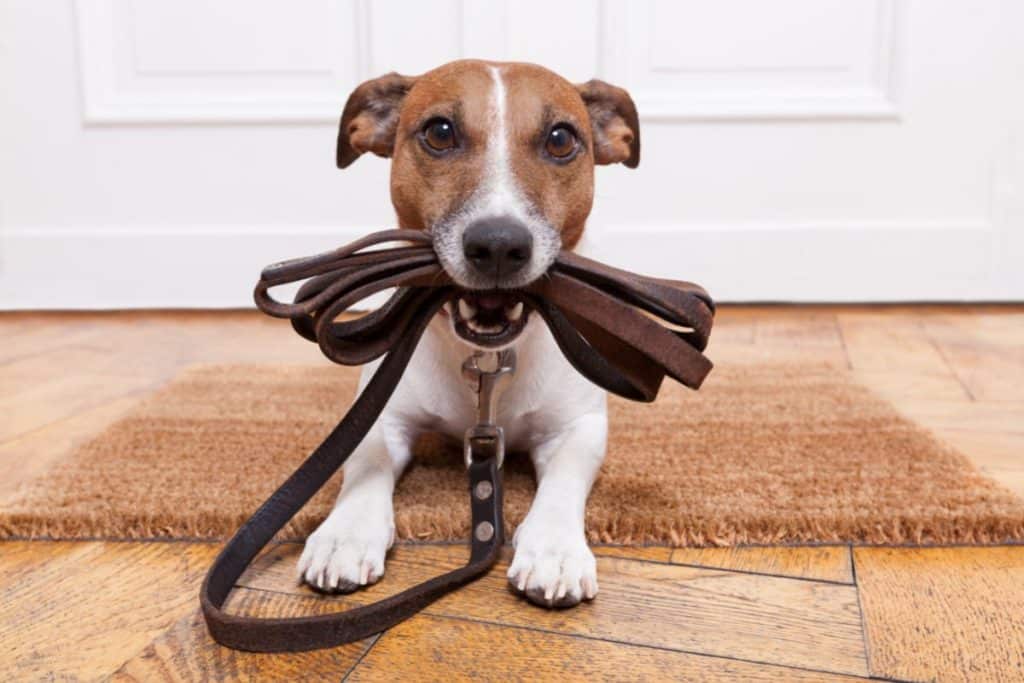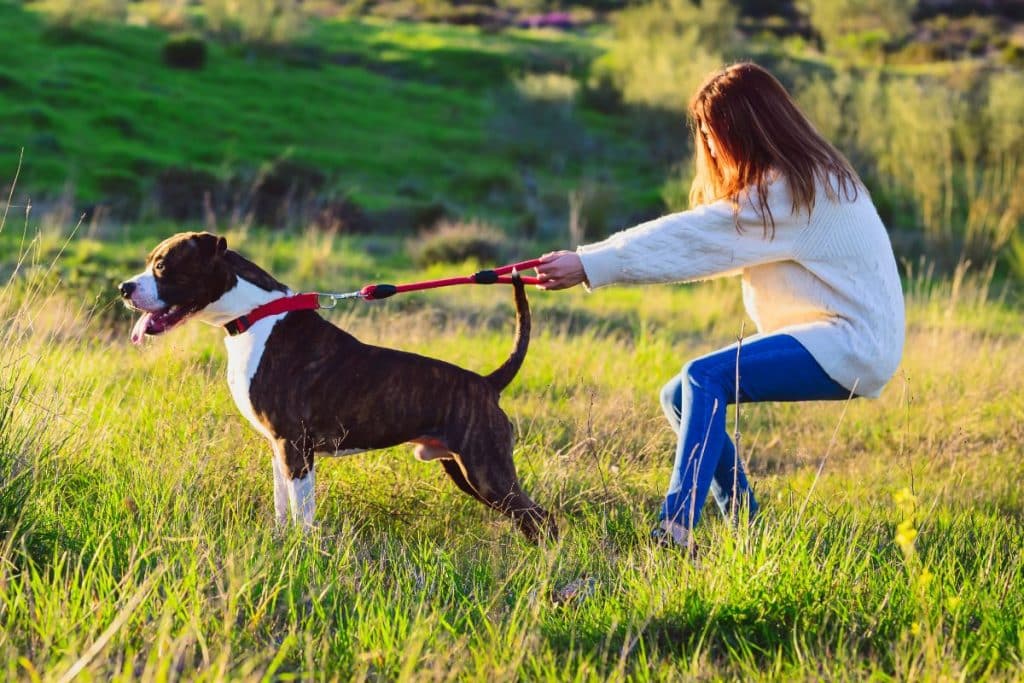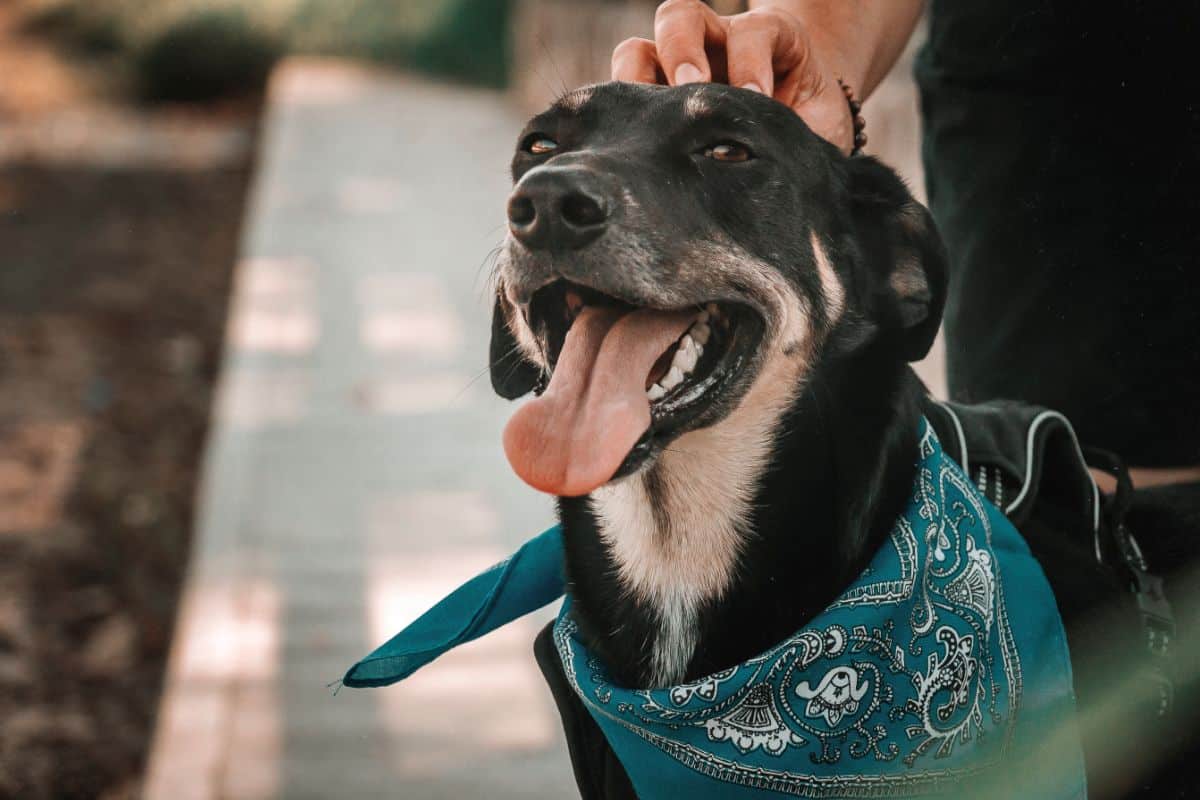Let’s paint a picture. You’ve done everything by the book: vet visits, obedience training, and neutering your canine friend.
But a puzzle remains unsolved — why does your neutered dog still hump everything in sight? From your leg to their favourite toy, nothing appears to be off-limits.
It’s a common misconception that neutering can completely curb humping behaviour. Unfortunately, much misinformation is out there, leading to misplaced expectations and undue stress among pet owners.
So, is humping post-neutering natural? Well, there’s more to it than meets the eye.
Generally, it’s normal for a neutered dog to engage in humping behaviour. Humping is not solely tied to sexual hormones and hence can’t be cured by neutering your dog. Humping can be a learned behaviour or manifest in various psychological factors, such as excitement, stress, or seeking attention.
I honestly understand your concern. Seeing your neutered dog still engaging in this activity might be surprising or embarrassing. But you must understand that it’s often a part of natural canine behaviour.
Of course, there’s a limit to anything. So, where must we draw the line? Let’s find out.
Why is your dog humping everything?
It’s tempting to think of neutering as a ‘cure-all’ for various behavioural issues, including humping. However, the reality is far more nuanced.
As we just discussed, neutering primarily curtails the reproductive capabilities of your dog and lowers testosterone levels.
While this can decrease sexually motivated humping, it doesn’t mean the behaviour will disappear entirely, especially if the root cause is something else.

1. Dominance
It has baffled both dog owners and even some trainers. You must understand that in the dog world, dominance isn’t about ‘power’ as much as it is about ‘priority access’—to food, mates, or even your attention.
Solution: Train your doggo to respect boundaries. Teach them not to climb on the couch or jump on guests. You can use techniques like clicker training to reward good behaviour, diminishing the desire to engage in humping for dominance.
2. Excitement
In a world of wagging tails and sniffing noses, humping can be an overflow of sheer exuberance. But how do you differentiate between joyful humping and problematic behaviour? It boils down to your understanding of their language and expressions.
Solution: A well-timed diversion can work wonders. Create a ‘go-to’ activity that channels this excitement more acceptably. Keep a favourite toy handy and engage your dog in a quick game.
3. Stress or Anxiety
You’d be surprised how much our canine companions internalise their environments. A stressful situation can cause an adrenaline rush, which might lead to humping as a stress-release mechanism.
Solution: Stress-alleviating strategies like deep pressure therapy (wrapping your dog in a weighted blanket or vest) can be highly effective. Consider a more structured behavioural therapy with a certified canine psychologist if stress is recurring.
4. Attention Seeking
Yes, dogs are smart enough to realise that humping gets them attention, even if it’s the kind you’d rather not give. If they feel ignored or want to engage you in some playtime, humping can be their weird but effective ‘look at me’ signal.
Solution: The best way to tackle this is to redirect the behaviour instantly. Offer an alternative activity that will engage them and give them the attention they crave. And reward them when they make the switch.
How to address & discourage humping behaviour?

Step 1: Identify the trigger.
Before donning your “Fix It” cap, you must identify the triggers that cause your neutered dog to engage in humping. Observe them and look for the four common triggers we just discussed.
Step 2: Stop them before they engage.
As soon as you see your dog gearing up for a humping spree, redirect their attention. Use a firm but gentle command like “No” or “Stop.”
Follow it up by engaging them in alternative activities like playing fetch or offering a chew toy.
Do note that consistency is key. Every household member should use the same command to prevent confusing the dog.
Step 3: Adopt long-term behavioural training strategies.
1. Time-Outs
Give your dog a brief time-out immediately after they engage in humping. A short 5-10 minute separation can help them calm down and understand that the behaviour won’t be tolerated.
Designate a ‘time-out’ zone that’s free of stimuli. Don’t use their crate for this purpose, as you want them to associate the crate with positive experiences.
2. Positive Reinforcement
Reward your dog when they choose not to hump in a situation where they usually would. This can be with a small treat, affection, or a quick game. You can also use a clicker for this.
3. Obedience Training
Training your dog in basic commands like ‘Sit,’ ‘Stay,’ and ‘Come’ will give you more control in redirecting their behaviour.
Consult a professional for a structured training program tailored to your dog’s triggers and responses.
4. Desensitisation
Desensitisation can work well for dogs who hump in response to triggers like guests arriving, a ringing phone, or seeing other animals.
Gradually expose them to the trigger while rewarding calm behaviour until they become desensitised.
5. Doggy Daycare and Socialization
Sometimes, the humping is a result of pent-up energy. Regular playdates or trips to a dog park can help them socialise better and use their energy more acceptably.
Choose a dog park or daycare with responsible pet owners and well-behaved dogs to ensure a positive environment.
When should you consult a veterinarian?
You’ve tried it all—the obedience training, positive reinforcement, and time-outs, but nothing seems to have a lasting impact. Or perhaps, the humping behaviour has suddenly spiked without an apparent reason. The last option is to call the experts.

Here are some red flags indicating it’s time to involve a veterinarian:
- Excessive Humping: The issue could be significant if your dog’s humping behaviour seems compulsive and constant. It can be both physically draining and mentally stressful for your dog.
- Physical Discomfort: Immediate veterinary assistance is crucial if your dog seems physically uncomfortable, whimpering, or showing signs of pain while humping.
- Aggressive Behavior: This could indicate an underlying issue requiring professional evaluation.
- Change in Urination Patterns: A sudden change in urination patterns and frequent humping may indicate a urinary tract infection or other medical conditions.
- When All Else Fails: After you’ve exhausted all avenues, and the behaviour persists or worsens, that’s a definite cue to consult a veterinarian.
Frequently Asked Questions (FAQs)
1. Do neutered male dogs still want to mate?
While neutering significantly reduces the sexual drive in male dogs, it doesn’t entirely eliminate the desire to mate. It’s common for neutered dogs to show some mating behaviours, especially if they were neutered at an older age.
However, these behaviours are typically less intense and less frequent than in unneutered dogs.
2. Should I let my neutered dog hump things?
It’s not recommended to allow your neutered dog to hump objects. While humping isn’t always sexual behaviour, it can be disruptive, embarrassing, or even lead to confrontations if your dog humps another dog or a human.
3. Is humping harmful to my dog or other pets?
Humping is usually not harmful to dogs or other pets but can lead to problematic social interactions. For instance, if your dog frequently humps other dogs, it may trigger fights or stress among the animals involved.
4. How do I stop my neutered male dog from mounting other dogs?
Stopping a neutered male dog from mounting other dogs involves a multi-faceted approach, starting with a strong recall command, pre-practised redirection techniques, and obedience training. It’s also important to consult a veterinarian.



